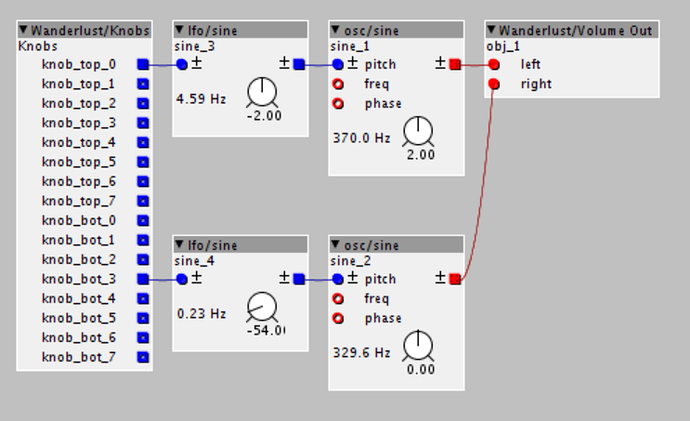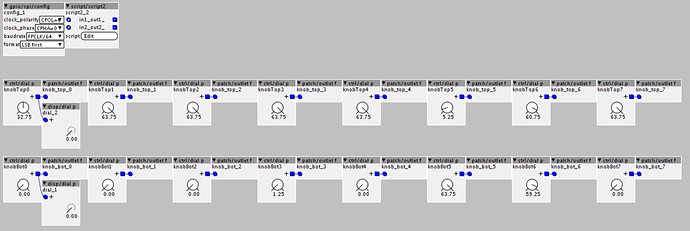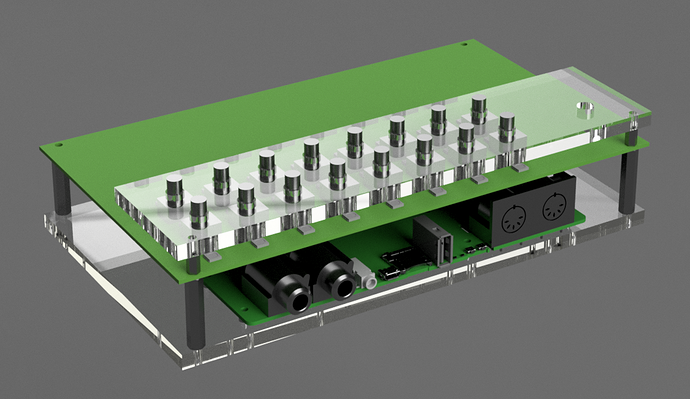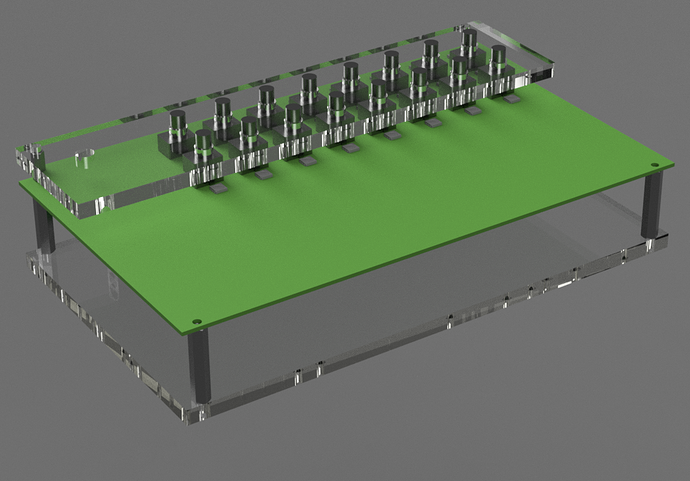Hello, I would like to introduce the Believotron Waveshaper (believotron.com). My friend Michael Una and I have been making and playing with synthesizers since the 90s. I've been working as an Electrical Engineer in design/mfg/IoT for the past 16 years. Michael has been making strange and wonderful instruments over at Unatronics.com
We wanted to take all of that design experience and offer as much flexibility as possible in a low-cost package. We both fell in love with Axoloti the minute we saw it and promptly threw out our audio engine we'd been working on.
We're currently done with our Rev 1 breakout prototype where we connected the capacitive touch inputs, RGB LEDs, and ADC Multiplexer to allow for so many knobs. I'm about to start working on the Rev 2 board and I wanted to share the project as-is so you could get a chance to see it and let me know what's important for you.
We do plan on creating more exotic instruments, but really wanted to make something special that you could produce, perform, or just sit in your basement and shred your eardrums 
Here's a pic of Rev 1 using the older CAP1188 (We've switched to the MPR121 for a number of reasons).
Let us know what you think!


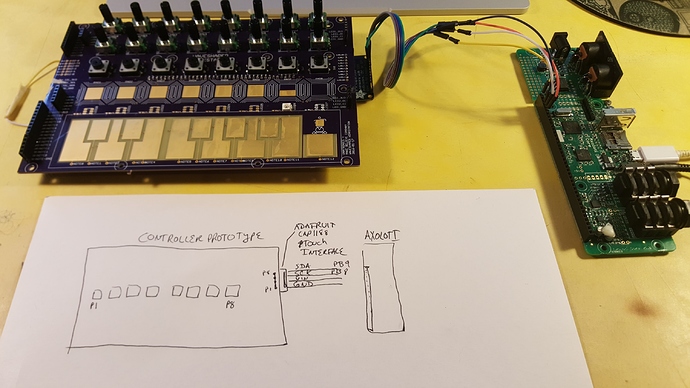


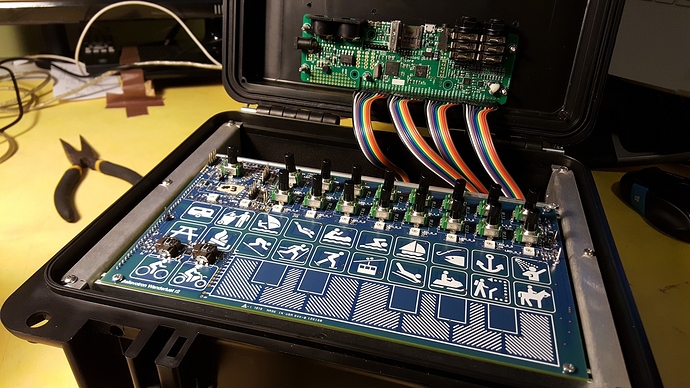
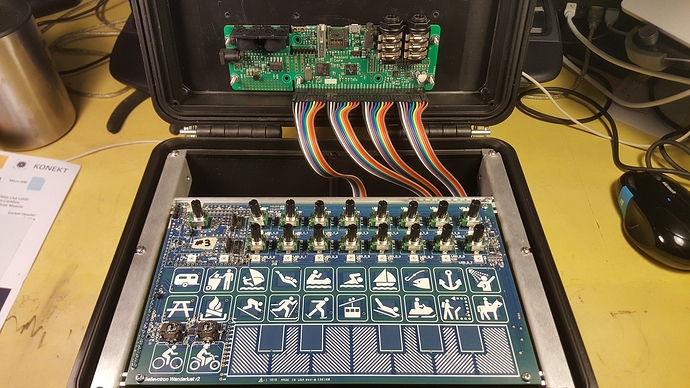
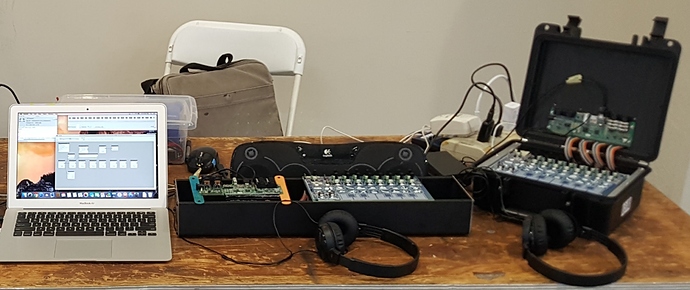
 )
) .
.